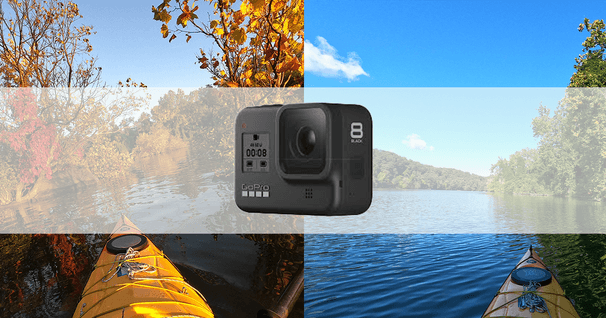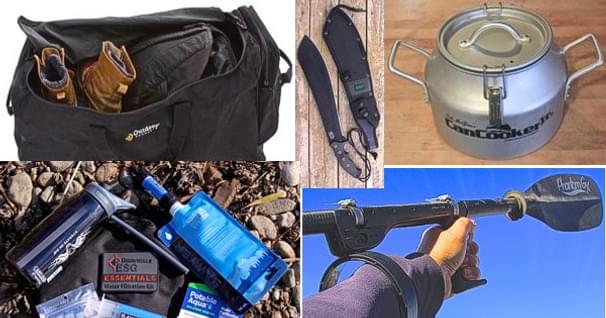Binocular for Kayaking
Ever tried to really get a steady view through binoculars while on the water? Even on a calm surface, the boat is going to bob, your body is performing micro gyrations to keep balance and the wind can offer annoying nudges all influences that can make it hard to keep a subject within the narrow diameter of even a large viewing field. Here are a few thoughts on how to minimize that problem by considering a few compromises when you shop around for that all-season, all-use, perfect set of binoculars.
First of all, of course, there is no “perfect” pair of binocs’. Their uses are too diverse for one style or type to satisfy all needs. For kayaking, most paddlers use binoculars to bird watch or view marine wildlife from afar a glimpse at a whale’s dorsal fin, birds high atop a rookery, frolicking otters in a kelp bed. They are also useful for scouting out entrances and distant passageways so the best routes can be assessed. I’ve even used them to “beachcomb” from my cockpit to see if a shoreline might offer up some treasures. Whatever the reason, proper magnification and overall size are the most important considerations when choosing binoculars.
Before entering the realm of choices, perhaps a quick primer on binocular basics is in order. Binoculars are two viewing scopes placed side-by-side. They magnify the image multiple times depending on the sizes of the lenses within each set. Even though you are peering through two eye tubes, the view should be seen as one circular, that’s right, one crystal clear, enlarged circular image. Why Hollywood keeps using that cheap double circle mask to create the impression of someone using binoculars is beyond me.
The size of that image is based on the size of the lens. Most binoculars are referred to as 7 X 35, 8 x40, 10 x50 and so on. That first number refers to the number of times an image will be magnified 7 times, 8 times, 10 times it’s as though you and the subject are suddenly X times closer to each other.
The second number refers to the width of the objective lens, that big lens in front - in millimeters. It’s where the light enters the tubes of the binoculars and is reflected and refracted around to produce the image at the other end. Naturally the larger that lens is, the more lightly it will let in usually. The way to know the relative light retrieving value of a pair of binoculars is to divide the objective lens size by the magnifying number.
In the case of an 8 x 40mm pair, the light value is 5 (40/8). The higher the light value, the more light that is captured by the binoculars. Therefore the 8 x40 and the 10 x 50 pairs are the same in that regard. Actually for dawn and dusk viewing for wildlife one might be better of with 8 x 42 or 7 x 50 binoculars because the light capture is significantly greater.
OK, quality and such notwithstanding, there are two other important factors to consider when contemplating binoculars for kayaking. The first is obvious - they should be waterproof. Not water resistant, water proof! There are fewer choices and you’ll pay more, but it will be worth it.
The next factor, is in my mind, the most important for getting the most from your sea binoculars.
Their weight.
Heavier binoculars will be easier to hold steady in a bobbing kayak if they are not too heavy to heft up and down fifty times an hour. Again, there are compromises to make. Granted the heavier pair requires a little more physical force to hold them up. That same force applied to the heavier bulk also helps keep them steadier than a lighter pair. You can hold a heavier, bigger pair much steadier than smaller binoculars. You can brace your arms against your torso to help spread out the counter motion that is causing the binoculars to move around.
One of the biggest problems with heavier equipment manifests itself as a literal pain in the neck and shoulders. The shear weight of even a couple of pounds around your neck all day can take its toll. One remedy for heavier equipment is a stretchable strap that acts like a linear shock absorber and reduces the stress on your neck. When used in association with a wide, soft shoulder pad, it makes these straps even more appealing.
The length of the strap is important, too. Since I have waterproof binocs I like to keep the strap long enough so the front edge just touches and rests upon the sprayskirt. That takes at least a portion of the weight off my neck while I am paddling.
If your spray skirt is one that tends to allow water to pool up on its concaved surface, you may not want your lenses dangling in salt water all day or even fresh water for that matter.
If you like to go ashore and explore tide pools, here’s a tip for both binoculars and cameras. It doesn’t take long to get mesmerized by all the activity in a tidal pool when walking a beach. Before long you find yourself stooping over to poke at or pick up something below the surface. As you bend over, your camera, hanging from your neck, starts to swing out away from your torso. As you lower yourself down, the camera or binocs are swinging down and out right into the salty basin beneath you. If you are an avid beachcomber, shorten your strap before you stoop to investigate.
In review: smaller objective lens relative to the magnification means less light coming through; heavier binoculars may be easier to handle at sea, especially in a bobbing kayak; take the tension off that heavy piece of gear around your neck by using a stretchable strap.
One of the best parts of kayaking is taking in all that’s around you. The binoculars offer extensions to your eyes and the camera, an extension of your memories. Enjoy the view and safe paddling.
Tom Watson is an avid sea kayaker with 15 years experience in the North Pacific waters of Kodiak Island, Alaska. He is also a freelance writer whose articles have appeared in most of the popular kayaking publications. He is a frequent presenter at regional kayak symposia. Currently he is working on his third guidebook entitled "Think Like a Survivor" to be published by Created Publishing, International, for release in spring, 2005.
Related Articles
Wing foiling is the next up and coming trend within the standup paddleboard community. Combine your SUP,…
~A Paddler's Post submitted by Gregg Jackson~ For decades I had combined the joys of hiking and…
Each year the outdoor industry pulls back the curtain to showcase more and more "stuff" for us to drool…
You'd think choosing a canoe pack, since it's only generally used for carrying a large volume of gear…



